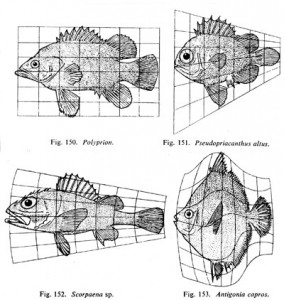Comprising a steel space frame, it is the largest ETFE clad structure in the world with over 100,000 m² of ETFE pillows that are only 0.2 mm (1/125 of an inch) in total thickness. The ETFE cladding allows more light and heat penetration than traditional glass, resulting in a 30% decrease in energy costs.
The outer wall is based on the Weaire–Phelan structure, a structure devised from the natural formation of bubbles in soap lather. The complex Weaire–Phelan pattern was developed by slicing through bubbles in soap foam, resulting in more irregular, organic patterns than foam bubble structures proposed earlier by the scientist Kelvin.
The irony of this project is that the façade with ETFE looks quite ugly in real life, the blue lights in the night on the panels make the building look better. ETFE is a self-cleaning material but I guess the architects under-estimated the air pollution of Beijing, certain portions of the structure seems impossible to clean.
Unlike traditional stadium structures with gigantic columns & beams, cables & spans, to which a facade system is applied, the architectural space, structure and facade of the Water cube are one and the same element.
Growth and Form by D’acry Thompson
Scottish embryologist D’Arcy Wentworth Thompson (1860-1948) grew up in the newly cast shadow of Darwinism, and he took issue with some of the orthodoxies of the day–not because they were necessarily wrong, he said, but because they violated the spirit of Occam’s razor, in which simple explanations are preferable to complex ones. In the case of such subjects as the growth of eggs, skeletons, and crystals, Thompson cited mathematical authority: these were matters of “economy and transformation,” and they could be explained by laws governing surface tension and the like. The book was published 1917 almost a century ago but finds its relevance to present. The book is full of questions and examples. In his book he compares the shapes or forms of related species. He doubtless would have enjoyed the study of fractals, which came after his time. In “On Growth and For”, he examines such matters as the curve of frequency or bell curve, which explains variations in height among 10-year-old schoolboys, conformal transformation, the florets of a daisy, the distribution of darts on a cork board, the thickness of stripes along a zebra’s flanks, the shape of mountain ranges and sand dunes, and spirals ,which turn up everywhere in nature you look: in the curve of a seashell, the swirl of water boiling in a saucepan, the sweep of faraway nebulae, the twist of a strand of DNA, the turns of the labyrinth in which the legendary Minotaur lived out its days. Tries to find a theory to explain the evolution in nature in mathematical terms, gives us a sense or a notion of topological transformations, the idea of multiplicity, and the result is an astonishingly varied book that repays skimming and close reading alike. English biologist Sir Peter Medawar called Thompson’s tome “beyond comparison the finest work of literature in all the annals of science that have been recorded in the English tongue.”
What interests me is, “The Relevance of Algorithms“, where Tarleton Gillespie writes:
“in many ways, algorithms remain outside our grasp, and they are designed to be. This is not to say that we should not aspire to illuminate their workings and impact. We should. But we may also need to prepare ourselves for more and more encounters with the unexpected and ineffable associations they will sometimes draw for us, the fundamental uncertainty about who we are speaking to or hearing, and the palpable but opaque undercurrents that move quietly beneath knowledge when it is managed by algorithms.”
An accommodation with and an accounting for this fundamental uncertainty is core to the new critical and vernacular literacy. To paraphrase Huxley, we cannot reason ourselves out of our basic incoherence. All we can do is learn the art of being incoherent in a reasonable way.
I am talking about art, I am talking about books, about maps, about drones, and some of these are aesthetic discussions and some of them are political ones and some of them are historical, personal, sexual: that’s not the point. What allies them is the network, us and our technologies, the technology you are using to read this and I am using it to write it, but also the sum total of links that brought us here, you and I, the reading we have done, and the context this discussion inhabits and draws itself from.
What this is, what the New Aesthetic is, is an attempt to do what I have been thinking of as long-form writing online; that is, writing with the same range of argument and continuity of thought as book writing, but inhabiting the network, natural to it and fluent in it. Writing with a disposition, just as Dronestagram has a disposition, that is shaped as information, mobile and replicable. A literature comfortable with impermanence and fragmentation.
References: Wikipedia, Shades of grey


